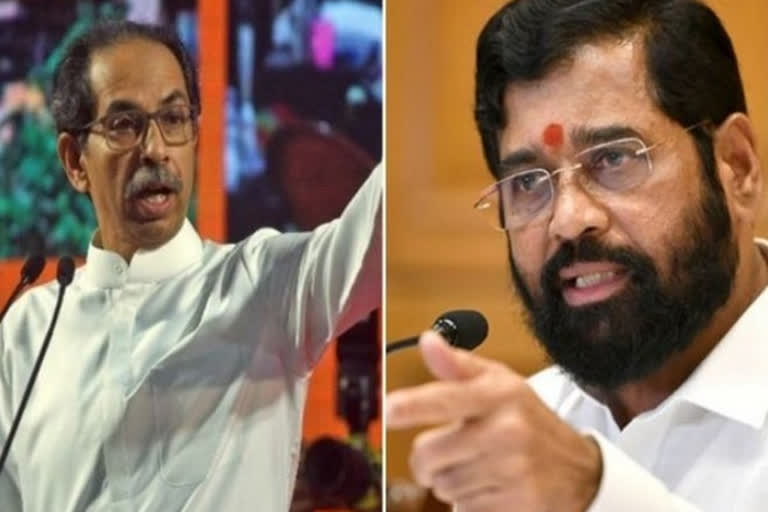New Delhi:The Eknath Shinde faction of the Shiv Sena on Tuesday cited a 1971 Supreme Court verdict, which gave recognition to a group led by former prime minister Indira Gandhi as the original Congress, before the Election Commission (EC) as it staked claim to the outfit founded by Balasaheb Thackeray.
Arguing before the entire EC, Mahesh Jethmalani, the counsel for the Shinde faction, also said the "surreptitious and unconstitutional" change to the Shiv Sena's constitution by Uddhav Thackeray in 2018 and the ideological shift in the party, which aligned with the Congress and the Nationalist Congress Party (NCP) to form the government in Maharashtra in 2019, led to a split in the outfit. Shinde walked out of the Sena in June last year to become the chief minister of Maharashtra with support from the Bharatiya Janata Party (BJP), after toppling the Uddhav Thackeray-led coalition government. The Shinde and Thackeray factions of the Sena have been locked in a battle for the control of the organisation since then.
"We are the real Shiv Sena. We have the numerical strength and we also have the control of the real organisation," Jethmalani told reporters after making representations before the EC. The Thackeray faction, represented by counsel Kapil Sibal, will place its arguments before the poll panel on January 17. "We cited the Sadiq Ali judgment before the Election Commission. We have the majority and that is the real test," Jethmalani said, claiming the support of 40 of the Sena's 56 MLAs and 13 of the 18 members in the Lok Sabha.
The Sadiq Ali judgment of the Supreme Court refers to a case of a split in the Congress after the then prime minister Indira Gandhi ensured the defeat of the official party nominee in the presidential election of 1969. The apex court had upheld the EC's authority to decide on matters related to the election symbol of a political party. Jethmalani told the members of the EC that the Shinde faction had passed a resolution in July last year to split the party as Thackeray had made changes to its constitution and compromised on ideology.
He also contended that the appointment of office-bearers by Thackeray after becoming the party chief was unconstitutional. The Shinde faction's lawyers said Balasaheb Thackeray had drafted the Shiv Sena constitution in 1981 and changed it in 1999 to include a provision for organisational polls on the direction of the EC. The Shinde faction argued that Uddhav Thackeray was elected as the Shiv Sena president, but this was not followed by elections for office-bearers.
While the Shinde faction concluded its arguments on Tuesday, the Thackeray faction reminded the poll panel that the dispute is pending before the Supreme Court. If the apex court disqualifies the lawmakers of the Shinde faction, then any decision taken by the EC will become infructuous, the counsel for the Thackeray faction argued.
On December 12, the lawyers representing both the factions had sought more time to examine the documents submitted by the rival groups to claim the party name and symbol. The Thackeray faction has been claiming that it does not recognise the group led by Shinde. In November last year, the EC had asked the Sena factions to submit fresh documents to back their claim to the party's name and poll symbol. It had also asked them to exchange the documents submitted to the poll panel with each other.
In an interim order in October, the commission had barred the two factions from using the party name or its "bow-and-arrow" symbol. Later, it had allotted "Shiv Sena-Uddhav Balasaheb Thackeray" as the party name for the Thackeray faction and "Balasahebanchi Shiv Sena" (Balasaheb's Shiv Sena) as the name for the Shinde group. The EC had said the interim order will be in force "till the final determination of the dispute". Shinde had rebelled against Thackeray's leadership, claiming the support of 40 of the 56 Sena MLAs and 13 of its 18 Lok Sabha members. Following Thackeray's resignation as the Maharashtra chief minister, Shinde was appointed to the top post with the support of the BJP. Paragraph 15 of the Election Symbols Order provides for the hearing of representatives of sections or groups as desired to be heard. (PTI)
